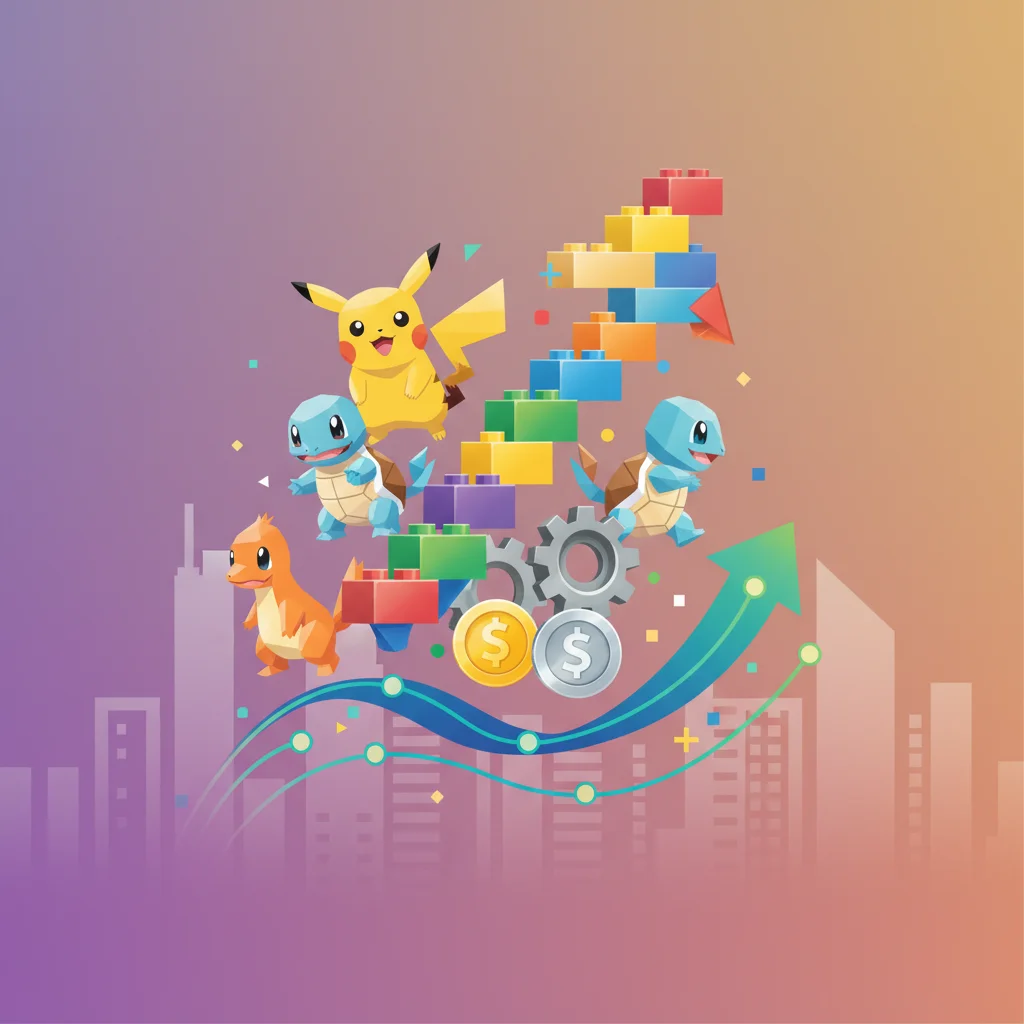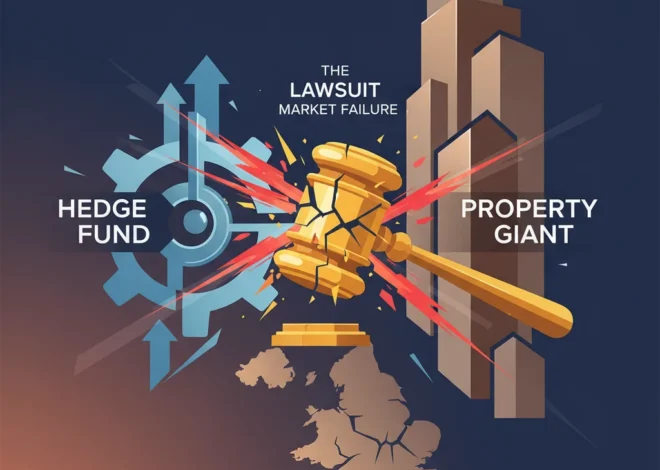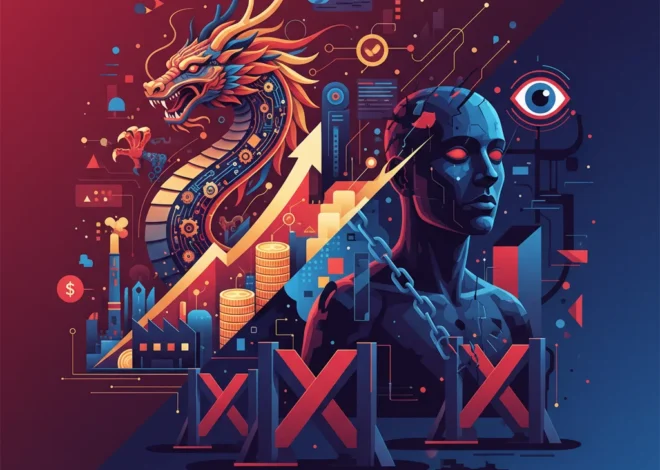
The Kidult Economy: How Lego and Pokémon are Powering a Surprising Market Rebound
A Toy Story for the Modern Economy
In a landscape marked by economic uncertainty and fluctuating consumer confidence, a surprising sector is demonstrating remarkable resilience and growth. The UK toy market, after a period of post-pandemic decline, is experiencing a significant resurgence. Sales have surged by an impressive 6% so far this year, a figure that is turning heads among analysts and investors alike. But the driving force behind this revival isn’t pester power from children; it’s the purchasing power of adults.
Welcome to the era of the “kidult” – a powerful demographic of adults who are unapologetically spending on toys, collectibles, and games for themselves. This phenomenon, fueled by nostalgia, a desire for tangible hobbies, and significant disposable income, is not just a quirky cultural trend. It’s a formidable economic engine, reshaping retail strategies, influencing the stock market, and offering a fascinating case study in modern consumer psychology. For finance professionals, business leaders, and savvy investors, understanding the dynamics of the kidult economy is no longer child’s play; it’s a critical insight into a thriving and often-underestimated market.
Decoding the Data: A Closer Look at the Market’s Comeback
The 6% growth figure is more than just a statistic; it’s a clear signal of a market correcting its course and finding a new, sustainable growth channel. After the lockdown-induced boom, the toy industry faced predictable headwinds as household budgets tightened and experiential spending returned. However, the current upswing suggests that a fundamental shift has occurred. The demand is no longer solely dependent on the traditional holiday and birthday cycles for children.
This trend isn’t isolated to the UK. Global market data reflects a similar pattern, where categories appealing to older audiences are outperforming traditional segments. According to analysis from Circana, the global toy market is a colossal industry, and while the overall market has seen fluctuations, the segments catering to collectors and adults have remained a consistent bright spot (source). Brands like Lego, with its intricate sets for adults, and The Pokémon Company, with its multi-generational appeal, are at the vanguard of this movement.
To put this into perspective, let’s examine the performance of key toy categories that highlight this adult-driven trend.
| Category/Brand | Key Drivers for “Kidult” Appeal | Economic Impact |
|---|---|---|
| Lego (Adult Sets) | Complex builds (e.g., Architecture, Star Wars UCS), mindfulness, display value, nostalgia. | Higher price points per set, creation of a premium product tier, strong brand loyalty. |
| Pokémon (Trading Cards) | Collectibility, secondary trading market, community events, multi-generational IP. | Drives a robust secondary market akin to stock trading, consistent sales from new releases. |
| Action Figures & Collectibles | High-fidelity models (e.g., Hot Toys), limited editions, connection to film/gaming franchises. | Fosters a dedicated collector base, value appreciation creating an alternative investment class. |
| Strategy Board Games | Social interaction, intellectual challenge, Kickstarter/crowdfunding innovation. | Growth in a niche but high-margin market, direct-to-consumer sales models. |
Forging the Future: Why AI and Mortgages in UK Schools is a Game-Changer for the Global Economy
The Psychology and Economics of Nostalgia
Why are adults flocking to toy stores? The answer lies at the intersection of psychology and economics. For many millennials and Gen Xers, brands like Lego, Star Wars, and Pokémon are not just products; they are cornerstones of their childhood. In a fast-paced, digitally saturated world, engaging with these tangible items offers a form of stress relief and a powerful dose of nostalgia—a potent marketing tool.
From an economic standpoint, this demographic is in its prime earning years. They possess the disposable income to indulge in premium-priced hobbies that were unattainable in their youth. A £500 Lego Millennium Falcon or a rare Pokémon card is not an impulsive buy but a considered purchase for a dedicated hobbyist. This transforms the financial model of toy companies, allowing them to develop high-margin products with sophisticated marketing campaigns targeted specifically at an adult audience. This strategic pivot is a masterclass in understanding and monetizing long-term brand equity.
Investing in Play: A Stock Market Perspective
For those in finance, this trend opens up compelling avenues for investment analysis. The consumer discretionary sector is often a barometer of economic health, and the resilience of the high-end toy market provides a nuanced signal. While a family might cut back on small, inexpensive toys during a downturn, the dedicated adult collector is often more willing to sustain their hobby spending. This creates a defensive moat for companies that cater effectively to this demographic.
Let’s look at the publicly traded giants in this space. While Lego is a private company, its strategy provides a valuable blueprint. Companies like Hasbro (NASDAQ: HAS) and Mattel (NASDAQ: MAT) are actively courting the adult market. Hasbro, with its ownership of Dungeons & Dragons and Magic: The Gathering, has long understood the adult hobbyist. Mattel’s “Barbie” movie success was a direct appeal to the nostalgia of an adult audience, driving merchandise sales far beyond its traditional target market (source).
When evaluating these companies, investors should look beyond simple toy sales and analyze their intellectual property (IP) portfolio as a core asset. A strong IP can be licensed for movies, video games, and merchandise, creating diverse revenue streams that are less susceptible to the cyclical nature of toy manufacturing.
Here is a simplified comparison of key players, highlighting their strategic positioning in the kidult economy.
| Company | Key “Kidult” IP / Strategy | Stock Market Consideration |
|---|---|---|
| Hasbro (HAS) | Wizards of the Coast (Magic, D&D), Star Wars & Marvel licenses, Transformers. | Strong position in hobby gaming; performance tied to blockbuster film releases. |
| Mattel (MAT) | Barbie (nostalgia marketing), Hot Wheels (collector editions), Masters of the Universe. | Demonstrated success in leveraging IP for major entertainment events. |
| Nintendo (NTDOY) | Part-owner of The Pokémon Company, Mario franchise. IP spans video games and merchandise. | A dominant force in multi-generational gaming with powerful cross-media IP. |
The Great Correlation: Why Bitcoin Is Behaving Like a Tech Stock This 'Red October'
Financial Technology and the Future of Collectibles
The growth of the kidult market is intrinsically linked to advances in financial technology. Sophisticated e-commerce platforms enable companies to market and sell directly to consumers. Secure online banking and payment gateways facilitate high-value transactions for rare items. Furthermore, the secondary market for collectibles thrives on fintech platforms like eBay and StockX, which provide escrow services, authentication, and price transparency, mimicking the functionality of a traditional trading exchange.
Looking ahead, the line between physical and digital collectibles may continue to blur. While the initial hype around blockchain and NFTs in this space has cooled, the underlying technology’s potential for verifying authenticity and ownership of rare digital and physical items remains a topic of interest. As the financial technology stack evolves, it could offer new ways to invest in and trade fractional ownership of high-value collectibles, further integrating this hobby into the broader landscape of alternative investments.
Conclusion: The Serious Business of Fun
The 6% rise in UK toy sales is a headline that conceals a much more profound story. It’s a narrative about demographic shifts, the enduring power of nostalgia, and the creation of new, high-margin markets. The “kidult” is not a fringe consumer but a central pillar of the modern entertainment and collectibles economy. For business leaders, the lesson is to appreciate the lifelong value of brand loyalty forged in childhood. For those in finance and investing, it’s a reminder that significant growth can be found in the most unexpected of sectors.
By understanding the forces driving adults to the toy aisle, we gain a clearer picture of the current economic climate and the future of consumerism. The worlds of banking, trading, and economics are not so far removed from Lego bricks and Pokémon cards; one just needs to know how to look at the game board.


